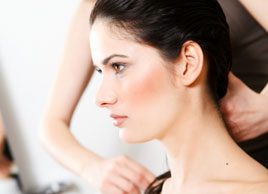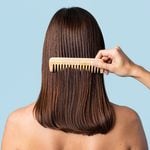Is it safe to get a Brazilian blowout?
Brazilian hair treatments offer silky smooth results, but could be toxic for your health. Find out what the risks are

Source: Best Health Magazine, January/February 2011
I’ve been curious about them, too, ever since I saw the silky results on a friend with thick, bushy, frizzy hair. She told me: ‘This has changed my life! It got rid of the frizz, and my hair looks and feels amazing.’
Brazilian-style treatments’sometimes called keratin smoothing treatments’are sweeping salons. They react with hair’s keratin to make its outer layer lie flat. ‘The shaft becomes stiffer and straighter,’ explains California chemist Doug Schoon, who consults to the beauty industry. The treatment takes one to three hours, and lasts three months. (This is different from the Japanese thermal straightening treatment, essentially a perm, which takes a whole day in the salon.)
How do they work?
With the Brazilian, a technician in rubber gloves coats each hair with the solution, starting about a quarter-inch away from the scalp. Hair is blow-dried again, and a flat-iron is passed over it. The solution needs to set for 72 hours, during which time you can’t even bend your hair behind your ears. Then, you can return to the salon to have the solution washed out with a special shampoo, or you can do it at home with that shampoo. Prices range from $300 to $500, depending on the salon and how long your hair is (and opting for the follow-up visit can affect price).
But there’s a scary drawback. My friend said she was almost sick from the noxious fumes while the treatment was being done. Soon after, Health Canada put out an ‘unacceptable formaldehyde content advisory‘ on a product called Brazilian Blowout solution. Concerned, she checked with her salon, and it uses another brand. ‘My Google search found it contains no formaldehyde.’ So she can’t figure out what caused the fumes. Whether her treatment did contain formaldehyde is hard to determine, since manufacturers don’t always properly list ingredients. ‘I’m starting to wonder, what do we have to do to look like Jennifer Aniston? And at what price?’
The ingredient debate
Formaldehyde’yes, the stuff used to embalm bodies’is linked to cancer in humans when inhaled chronically over a long period. It’s used in many cosmetics as a preservative; in Canada, it can’t exceed 0.2 percent. Health Canada’s advisory on the Brazilian Blowout product put the formaldehyde level at 12 percent (a follow-up advisory gave 8.4 percent). They tested it after getting complaints of burning eyes, nose and throat; breathing difficulties; and a case of hair loss.
Schoon, though, argues formaldehyde is a gas, and that a gas can’t be an ingredient in a product. (Formaldehyde is a by-product of heat; the flat-iron on the solution releases tiny traces into the air. Health Canada’s warning, however, encompasses all forms of formaldehyde, and says elevated levels in any form pose a risk.) Generally, says Schoon, Brazilian-style smoothing treatments contain formalin’the fixative solution formed when formaldehyde is mixed with water and methylene glycol. ‘And the International Nomenclature of Cosmetics Dictionary recognizes formalin by the name methylene glycol,’ he told me. While Schoon concurs that sensitive individuals may experience short-term symptoms such as irritated eyes or skin, headaches or difficulty breathing, he opines: ‘These suggest that salons should improve their ventilation.’
Looking for more answers, I turned to David Palmer, professor and acting head of chemistry at the University of Saskatchewan. ‘Technically it can be called methylene glycol, but that doesn’t mean you should pour it on your head. Using another name doesn’t make it safe; it still releases formaldehyde’spontaneously at room temperature, and rapidly when heated. If ventilation is an issue, isn’t that a warning sign?’
What about treatments that claim not to contain these ingredients’such as Keratin Complex? Roberto Barbosa, owner of Toronto’s Salon Escape, which provides the service, says, ‘It contains timonacic acid, which, when heated above 450°F, breaks down into miniscule amounts of bonded formaldehyde. But our flat-irons don’t even go to 450°.’ (For the record, this product is banned in Australia and parts of Europe.)
The future of Brazilian hair treatments
These treatments obviously work well on hair that needs taming, and many women are loving the results. Says Darren Praznik, head of the Canadian Cosmetic, Toiletry and Fragrance Association: ‘There’s still a scientific discussion going on. We appreciate Health Canada’s engagement in this and that it’s an independent reviewer mindful of risk factors. They’re the final arbiter.’
Says Gary Holub, Health Canada’s media relations officer, regulatory communications: ‘We are continuing to follow up on incident reports related to other Brazilian- style hair treatment products.’
Until more brands are tested and the results released, this is all’pardon the pun’a little tough to straighten out. Meantime, if you’re reluctant to take the plunge and get one of these treatments, you can at least take some comfort in knowing that waves and curls are a big trend this season.
This article was originally titled "Help me, Rhonda!" in the January/Febrary 2011 issue of Best Health. Subscribe today to get the full Best Health experience’and never miss an issue!




